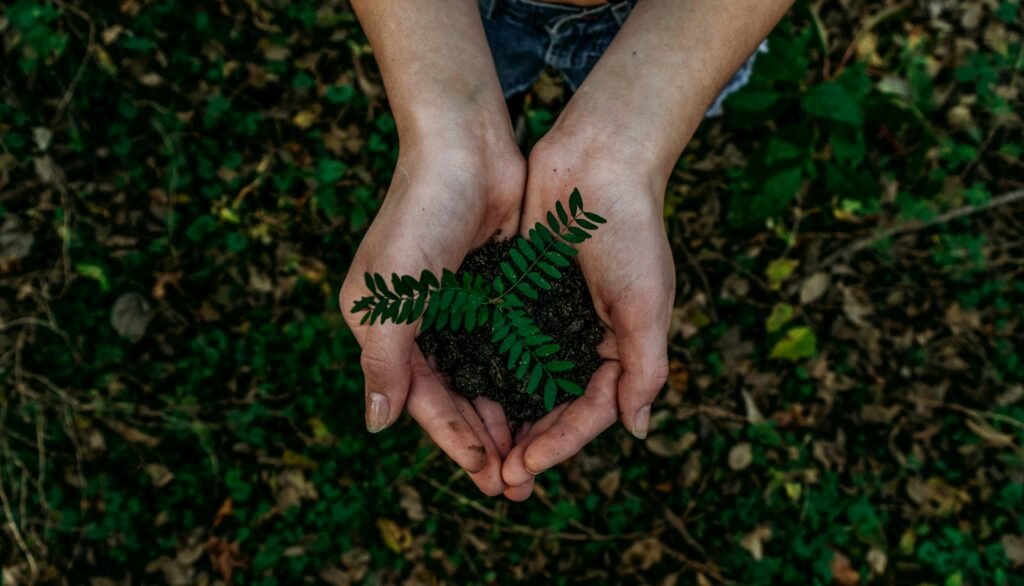You know that feeling when you open a package and it’s filled with those sturdy and neatly stacked little crates that make you instantly excited? Well, have you ever wondered how those crates are made? In this article, we’ll explore some fascinating sustainable approaches towards crate production that not only ensure high-quality products but also contribute to a greener and more eco-friendly future. Get ready to uncover the secrets behind these essential packaging essentials and discover how they’re created in a way that’s both environmentally conscious and economically advantageous. So, grab a cup of tea, sit back, and let’s dive into the world of sustainable crate production!
1. Material Selection
1.1 Use of Sustainable Materials
In order to promote sustainable and eco-friendly crate production, it is crucial to carefully consider the materials that are used. Opting for sustainable materials helps to reduce the environmental impact and conserve natural resources. Materials such as bamboo, which grows rapidly and can be easily replenished, or recycled plastic, which reduces the need for new raw materials, are excellent choices for sustainable crate production.
1.2 Alternatives to Wood
Traditionally, wood has been a popular choice for crate production. However, as the demand for sustainable practices grows, it is important to explore alternatives to wood. Materials like cardboard, which is recyclable and biodegradable, can be a great substitute for wooden crates. Additionally, materials like metal or sustainable composites can offer durability and longevity while reducing environmental impact.
1.3 Recycled Materials
Using recycled materials in crate production is an effective way to reduce waste and divert materials from landfills. Recycled plastics and metals can be transformed into durable and long-lasting crates. By incorporating recycled materials into crate production, we not only conserve resources but also contribute to the circular economy by giving new life to materials that would otherwise be discarded.
2. Energy Efficiency
2.1 Use of Renewable Energy Sources
Transitioning to renewable energy sources, such as solar or wind power, can significantly reduce the carbon footprint of crate production. By harnessing the power of renewable energy, we can minimize greenhouse gas emissions associated with manufacturing processes. Investing in renewable energy not only benefits the environment but also helps to create a sustainable and resilient energy system.
2.2 Energy-Efficient Manufacturing Processes
Making manufacturing processes more energy-efficient is another essential aspect of sustainable crate production. By optimizing machinery, improving insulation, and implementing energy-saving technologies, we can reduce energy consumption and minimize waste. Utilizing energy-efficient manufacturing processes not only helps to protect the environment but also has the potential to generate cost savings for crate producers.
2.3 Reduction of Energy Consumption
In addition to utilizing renewable energy sources and energy-efficient manufacturing processes, it is important to actively seek ways to reduce overall energy consumption in crate production. This can be achieved by implementing energy management systems, conducting regular energy audits, and promoting energy conservation practices among employees. By reducing energy consumption, we can contribute to a more sustainable and energy-conscious future.

This image is property of images.unsplash.com.
3. Waste Reduction
3.1 Minimizing Raw Material Waste
Efforts should be made to minimize raw material waste in crate production. This can be achieved through careful material planning, accurate measurement, and efficient cutting and shaping processes. By optimizing material usage and reducing waste, we can conserve resources and lower production costs. Implementing lean manufacturing principles and continuous improvement strategies can further aid in reducing raw material waste.
3.2 Recycling and Reusing Waste Materials
Whenever possible, waste materials generated during crate production should be recycled or reused. Implementing recycling programs and establishing partnerships with recycling facilities can ensure that materials such as cardboard, plastic, and metal are diverted from landfills and given a new purpose. By closing the loop and reusing waste materials, we can minimize the environmental impact of crate production.
3.3 Implementing Waste Management Systems
To effectively manage waste in crate production, it is essential to establish comprehensive waste management systems. This may include segregating different types of waste, implementing proper storage and disposal methods, and monitoring waste generation and disposal practices. By implementing effective waste management systems, we can minimize pollution and ensure that crate production remains environmentally sustainable.
4. Water Conservation
4.1 Efficient Water Usage in Manufacturing
Conserving water in crate production is crucial for the preservation of this precious resource. Implementing water-saving technologies, such as low-flow faucets and automatic shut-off valves, can help reduce water consumption during manufacturing processes. Additionally, optimizing water usage through equipment calibration and water recycling systems can further contribute to water conservation efforts.
4.2 Water Treatment and Reuse
Instead of simply discarding water, implementing water treatment and reuse systems can help conserve water in crate production. By treating and reusing water, we can reduce the demand for freshwater sources and minimize the environmental impact on water bodies. Investing in water treatment infrastructure and promoting responsible water management practices are key steps towards sustainable crate production.
4.3 Water Consumption Tracking and Reduction
Tracking water consumption in crate production allows for better understanding and management of water usage. By implementing water consumption tracking systems, crate producers can identify areas of high water usage and develop strategies to reduce consumption. This may involve improving process efficiency, updating equipment, and implementing water-saving initiatives. By reducing water consumption, we can contribute to the conservation of this vital resource.

This image is property of images.unsplash.com.
5. Emissions Reduction
5.1 Implementation of Low-Emission Processes
Reducing emissions during crate production is essential for mitigating climate change and ensuring a sustainable future. Implementing low-emission processes, such as using energy-efficient equipment, optimizing transportation routes, and adopting cleaner manufacturing technologies, can help minimize greenhouse gas emissions. By actively reducing emissions, crate producers can play a significant role in combating climate change.
5.2 Use of Eco-Friendly Coatings and Finishes
In order to reduce the environmental impact of crate production, it is important to use eco-friendly coatings and finishes. Choosing water-based or low-VOC (volatile organic compounds) coatings and finishes can significantly reduce harmful emissions. These alternatives not only contribute to improved air quality but also eliminate the release of toxic substances into the environment.
5.3 Monitoring and Minimizing Air Pollutants
Regular monitoring of air pollutants is crucial in ensuring the sustainability of crate production. By conducting air quality assessments and implementing pollution control measures, crate producers can minimize the release of harmful pollutants into the atmosphere. Additionally, investing in emission control technologies and promoting employee awareness of air pollution can further contribute to a cleaner and more sustainable production process.
6. Product Life Cycle Assessment
6.1 Evaluating Environmental Impact throughout the Life Cycle
Conducting a comprehensive product life cycle assessment allows us to evaluate the environmental impact of crates from production to disposal. This assessment takes into account factors such as material sourcing, manufacturing processes, transportation, and end-of-life disposal. By identifying areas of high environmental impact, we can implement targeted strategies for improvement and promote a more sustainable product life cycle.
6.2 Identifying Areas for Improvement
Through product life cycle assessment, it becomes possible to identify areas within crate production that require improvement. This could involve minimizing the use of non-renewable materials, optimizing transportation logistics, or enhancing recycling and disposal methods. By actively addressing these areas of improvement, we can ensure that crate production becomes increasingly sustainable in the long run.
6.3 Sustainable Disposal at End of Life
Once crates have reached the end of their useful life, it is essential to ensure that they are disposed of in a sustainable manner. Implementing systems for responsible disposal, such as recycling or composting, can help divert crates from landfills and reduce waste. By encouraging customers to return crates for proper disposal or recycling, we can complete the sustainability loop and ensure that our efforts extend beyond production.

This image is property of images.unsplash.com.
7. Certification and Standards
7.1 Compliance with Sustainable Certifications
Obtaining sustainable certifications, such as Forest Stewardship Council (FSC) or Cradle to Cradle (C2C), demonstrates a commitment to sustainable crate production. These certifications provide assurance to customers that crates are produced using environmentally responsible practices. By complying with sustainable certifications, crate producers can build trust and credibility in the market and contribute to the wider adoption of sustainable practices.
7.2 Meeting Environmental Standards and Regulations
Compliance with environmental standards and regulations is not only a legal requirement but also a crucial aspect of sustainable crate production. By staying up to date with evolving regulations and industry standards, crate producers can ensure that their operations are in alignment with environmental best practices. Regular audits and assessments can help identify areas for improvement and ensure ongoing compliance with environmental requirements.
7.3 Continuous Improvement
Adopting a culture of continuous improvement is essential for sustainable crate production. By actively seeking feedback, monitoring performance metrics, and engaging in regular evaluations, crate producers can identify areas for improvement and implement strategies to drive progress. Embracing a mindset of continuous improvement not only enhances environmental sustainability but also contributes to the long-term success and competitiveness of crate producers.
8. Collaborations and Partnerships
8.1 Working with Sustainable Suppliers and Partners
Collaborating with sustainable suppliers and partners is an effective way to promote sustainability in crate production. By selecting suppliers who prioritize sustainable practices, crate producers can ensure that the materials and components used in crate production align with their sustainability goals. Building partnerships with organizations that share a commitment to environmental responsibility can further accelerate the adoption of sustainable practices throughout the supply chain.
8.2 Engaging in Research and Development
Engaging in research and development activities can foster innovation and drive sustainable advancements in crate production. By investing in R&D, crate producers can explore new materials, technologies, and processes that promote environmental sustainability. Sharing research findings and collaborating with industry experts and academic institutions can help foster a culture of innovation and accelerate progress towards sustainable crate production.
8.3 Sharing Best Practices
Collaboration and knowledge sharing play a crucial role in advancing sustainability in crate production. By sharing best practices and lessons learned, crate producers can inspire and educate others in the industry. Participating in industry conferences and events, sharing case studies, and engaging in open dialogue with peers can help crate producers contribute to the collective effort of creating a more sustainable future.
9. Consumer Education and Awareness
9.1 Promoting Sustainable Crate Choices
Educating consumers about the importance of sustainable crate choices is key to fostering change. Through marketing campaigns, product labeling, and informational materials, crate producers can highlight the environmental benefits of choosing sustainable crates. By emphasizing factors such as recyclability, durability, and low environmental impact, crate producers can encourage consumers to make informed and sustainable purchasing decisions.
9.2 Providing Information on Eco-Friendly Benefits
Providing consumers with information about the eco-friendly benefits of sustainable crates can help raise awareness and drive demand. By sharing details about the materials used, manufacturing processes, and environmental certifications, crate producers can highlight the positive environmental impact of their products. Transparent communication and clear messaging can empower consumers to make environmentally conscious choices.
9.3 Encouraging Responsible Usage and Disposal
Encouraging responsible usage and disposal of crates is crucial for promoting sustainability. Crate producers can provide guidelines on proper crate maintenance, reuse, and recycling. By educating consumers on how to extend the lifespan of crates and encouraging them to participate in recycling programs, we can minimize waste and contribute to a more sustainable crate ecosystem.
10. Economic Viability
10.1 Cost Analysis of Sustainable Approaches
While sustainability is a priority, it is important to assess the economic viability of implementing sustainable approaches in crate production. Conducting a comprehensive cost analysis can help evaluate the financial implications of adopting sustainable practices. This analysis may include factors such as material costs, energy savings, and potential long-term benefits. By demonstrating the economic viability of sustainable crate production, crate producers can make informed decisions that balance both environmental and financial considerations.
10.2 Long-term Financial Benefits
Implementing sustainable practices in crate production can yield long-term financial benefits. By reducing energy and resource consumption, optimizing processes, and minimizing waste, crate producers can generate cost savings over time. Additionally, by embracing sustainability and meeting the growing demand for environmentally responsible products, crate producers can tap into new market opportunities and gain a competitive edge. Gaining recognition as a sustainable and eco-friendly brand can further enhance customer loyalty and profitability.
10.3 Market Demand for Sustainable Crates
The growing market demand for sustainable products presents a significant opportunity for crate producers. Consumers are increasingly prioritizing sustainability and seeking out eco-friendly crate options. By aligning with market demand and offering sustainable crates, producers can capture a larger customer base and drive business growth. Additionally, as sustainability becomes a key criterion for business partners and supply chain stakeholders, embracing sustainability can help crate producers strengthen relationships and secure partnerships in an evolving market landscape.
In conclusion, sustainable and eco-friendly approaches in crate production are essential for creating a more sustainable and responsible industry. By carefully considering material selection, embracing energy efficiency, minimizing waste, conserving water, reducing emissions, conducting product life cycle assessments, complying with certifications and standards, fostering collaborations, educating consumers, and evaluating economic viability, crate producers can contribute to a greener future. Embracing sustainable crate production not only benefits the environment but also enhances financial performance, market competitiveness, and stakeholder relationships. By making conscious choices and implementing sustainable practices, crate producers can pave the way for a more sustainable and responsible industry.
